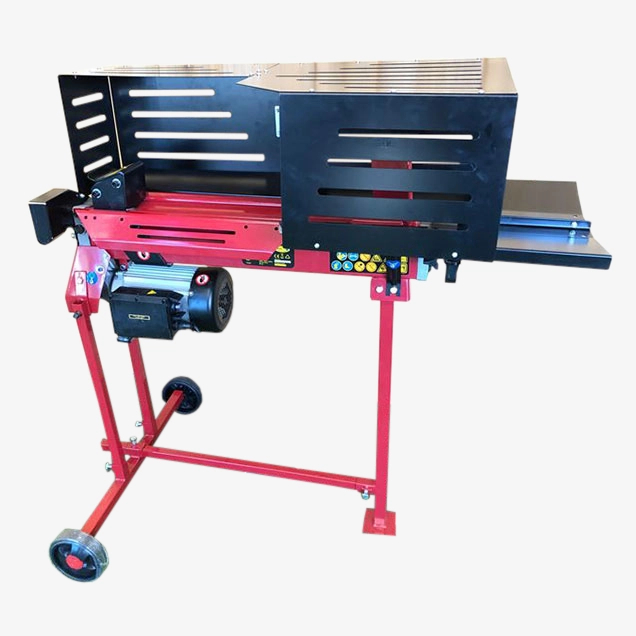Titan Pro Log Splitter Safety Cage and Work Bench
07/11/2024

Our 6 and 7 Ton log splitters are supplied with a safety cage and work bench that meet all European safety legislation. View our full range of electric log splitters.
What is a Log Splitter Safety Cage?
A safety cage is a protective barrier that surrounds the work area of the log splitter, specifically around the moving parts like the ram, wedge, and other mechanical components. The cage is typically made of steel or heavy-duty mesh and is designed to:
- Prevent accidental contact with the moving parts of the log splitter.
- Shield the operator from debris or wood fragments that may be kicked up during splitting.
- Ensure safe operating procedures by restricting access to potentially dangerous areas while the splitter is in motion.
Key Safety Features of Log Splitter Safety Cages
-
Physical Barriers:
- The cage is designed to keep hands, feet, and other body parts away from the hydraulic ram, wedge, and other moving components during operation.
-
Visibility:
- Our safety cage will still allow the operator to see the log being split and the progress of the work. This is accomplished with gaps in the panels that maintain visibility but prevent access to the dangerous parts.
- Our cages also have viewing windows to provide a clear line of sight while maintaining safety.
-
Debris Protection:
- The cage helps protect the operator from flying wood chips, bark, or debris that may result from splitting. This is particularly important when splitting logs with knots or other irregularities that could cause debris to fly outward
Best Practices for Using a Log Splitter Safely
Even with a safety cage, it’s crucial to follow proper safety protocols:
- Wear personal protective equipment (PPE): Protective gloves, goggles, and steel-toe boots should be worn to prevent injuries from flying debris, splinters, or accidents. We stock gloves and our range of safety glasses
- Keep hands and feet clear: Never place your hands or feet near the splitting area or the moving parts of the machine.
- Ensure proper log placement: Always position logs properly on the splitter, using your body weight to stabilize them if necessary, but avoid leaning over or getting too close to the machine.
- Inspect the machine regularly: Ensure that the safety cage and other safety features are intact and in good working order. Look for signs of wear or damage.
Conclusion:
A log splitter safety cage is a safety feature that helps protect operators from injury while using the machine. It provides a physical barrier between the operator and the dangerous moving parts of the log splitter, shields from flying debris, and ensures that the machine can't be operated unless it's safe to do so. Always make sure the safety cage is in place, properly secured, and in good condition before starting the splitter.